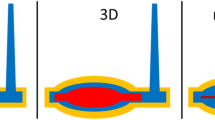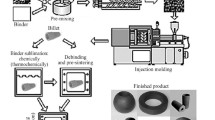Abstract
Until now there are no suitable injection moulding machines available for the production of single micro parts, so injection moulders produce big, but precise sprues to achieve the necessary shot weight. Very often over 90 % of the polymer are wasted and this waste can be an important cost factor. Moreover, the big sprue increases cooling time and, along with that, cycle time.
To open new dimensions for the minimum shot weight (<0.01 g), IKV, Aachen, Ferromatik Milacron Maschinenbau GmbH, Malterdingen, and Otto Männer Heißkanalsysteme GmbH, Bahlingen, with support of AGA Gas GmbH, Hamburg, have developed a new micro injection moulding machine.
The very small amount of plastics needed is plasticised in an electrically heated cylinder and fed into the injection cylinder by a plunger. A second plunger with a diameter of just 2 mm injects the molten material into the cavity. It is driven by an electric motor and a precise linear drive. A central element for the operation of the machine is the nozzle. It is heated electrically and can be cooled down rapidly by injecting liquid CO2 (TOOLVAC technology). In this way the gate is closed after the injection and the holding phase. The moulded part can be demoulded and a new injection moulding cycle starts. This processing technology reduces the sprue to about 15 to 20 mg.
The ability to function of the thermal shut-off-nozzle could be proven theoretically by calculations with the IKV software CADMOULD/MEX. These calculations were verified by temperature measurements on a prototype machine. With the results of these investigations the design of nozzle and mould was optimized. After the injection unit and all the necessary drives and controlling devices have been integrated, the operation characteristics of the machine prototype are analysed.
In the next step of the project, the focus is on improving the plasticising efficiency, because the prototype is equipped with a simply electrically heated plastification. For the thermal layout of the plasticising unit the recently developed 3D software SIGMASOFT was used. Moreover, different plasticising concepts are analysed, as there are a “Weißenberg”-extruder using the normal stress effect or plastification by ultrasonics.
Especially the plastification by ultrasonics is a very promising idea for very small amounts of plastics and therefore analysed further. Ultrasonics are used successfully for wel- ding and riveting in plastics processing, as it is fast and neat bondings are produced. A test unit was built to prove the ability to operate as a plasticising device and to optimize the necessary components and processing parameters. The plastification results regarding homogenization and morphology of the molten mass have been evaluated by microscopy.
The presentation will give detailed information about the trials and their results of the topics summed up above.
Similar content being viewed by others
Author information
Authors and Affiliations
Rights and permissions
About this article
Cite this article
Michaeli, W., Spennemann, A. & Gärtner, R. New plastification concepts for micro injection moulding. Microsystem Technologies 8, 55–57 (2002). https://doi.org/10.1007/s00542-001-0143-9
Issue Date:
DOI: https://doi.org/10.1007/s00542-001-0143-9




